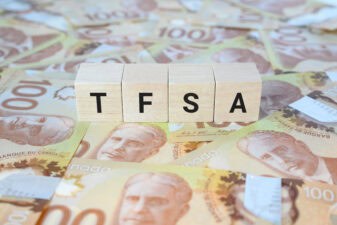Despite oil’s prolonged slump, I have been bullish on integrated energy major Husky Energy Inc. (TSX:HSE) for some time. The company, along with Suncor Energy Inc. and Imperial Oil Ltd. has been highly critical of the mandatory production cuts introduced by the Alberta government at the start of 2019 aimed at buoying the price of Canadian crude. While highly successful, those cuts have caused the price of Canadian light and heavy oil benchmarks Edmonton Par and Western Canadian Select (WCS) to soar as the price differentials to West Texas Intermediate (WTI) narrowed substantially.
Edmonton reduces mandatory production cuts
In response to industry criticism and the unintended fallout associated with substantially higher WCS, including making it uneconomic to ship bitumen by rail, Edmonton has dialed down the volume of barrels to be cut. For February and March 2019, the cuts were reduced by 100,000 barrels daily and Alberta’s premier recently announced that they will be decreased by another 25,000 barrels daily for April and then again by the same amount during May and June. This will boost supply, which will, it is hoped, cause the price differential to WTI to widen, making it more economical to ship by rail and attractive for U.S. refiners to buy. That is an important goal because U.S. Midwest refineries are the core market for the bitumen produced in Canada’s oil sands.
There are fears that price differentials will widen significantly once the cuts end, as the lack of pipeline exit capacity still exists and won’t be resolved until new pipelines are brought online. That means that as oil sands producers further ramp up production, oil inventories in Western Canada will climb once again.
Husky was deeply opposed to the cuts because not only were its refining operations generating significant profits because of the wide price differential between WCS and WTI, but it has been impacted by the fallout triggered by the cuts. This includes creating what it claims is a secondary oil market in Canada in which companies with excess capacity are selling those barrels to producers, which can boost profitability, making it less profitable to ship bitumen by rail. That created an additional cost for Husky as it sought to find ways to boost its oil output. Edmonton’s actions have also sharply reduced the short-term incentive for oil sands producers to invest in constructing more pipelines further exacerbating the lack of transportation capacity.
Is it time to buy Husky?
While WTI has gained 27% since the start of 2019, Husky has trailed behind losing roughly 3% of its value, creating an opportunity to acquire a quality diversified integrated energy major that’s poised to soar. Husky has built a large portfolio of oil assets with net after royalty reserves of 2.1 billion barrels of oil equivalent, which is 78% weighted to oil. After applying a 10% discount rate in accordance with industry methodology, deducting income taxes and net debt those reserves have a value of just over $13 per share, slightly less than Husky’s market value.
For 2018, Husky’s oil output was 299,000 barrels daily, a 7% decrease year over year that can be attributed to operational issues including an oil spill off on Canada’s east coast. Production during 2019 is forecast to average 290,000 to 305,000 barrels, which at the top end of that range represents a moderate increase over 2018.
Notably, Husky is focused on reducing the breakeven price for its operations, which for 2019 is forecast to be just under US$42 per barrel WTI. This highlights the profitability of Husky’s upstream operations with the North American benchmark trading at around US$60 a barrel.
The wide price differential between WCS and WTI, which reached record levels during November 2018, can be credited with giving Husky’s downstream earnings a healthy lift during the year. Compared to 2017, net earnings from its upgrading operations more than tripled to $361 million, while for its U.S. refining business, they surged to $481 million, more than double a year earlier and rose by a stunning 52% for Canadian refined products.
Among Husky’s strengths has been its ability to expand into the Asia Pacific, which has become a centre for economic growth and is experiencing a notable increase in demand for energy, particularly natural gas. This is because of the rapid development of many economies including China, India and Indonesia, where gas has become a fuel of choice. By the end of 2018, the region was responsible for generating 21% of Husky’s EBITDA.
Is Husky a worthwhile investment?
Once Edmonton’s production cuts end, it’s likely that the differential between WCS and WTI will widen once again, thereby boosting the profitability of Husky’s downstream operations. When the company’s focus on bolstering the profitability of its upstream operations is considered along with plans to optimize its portfolio through non-core asset sales, there is every indication that Husky’s earnings will soar. While investors wait for this to occur, they will be rewarded by its regular sustainable dividend yielding almost 4%.
 Claim Membership Credit
Claim Membership Credit







